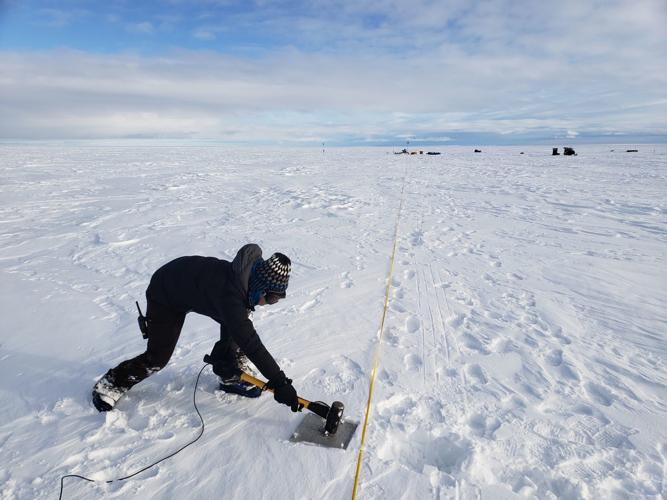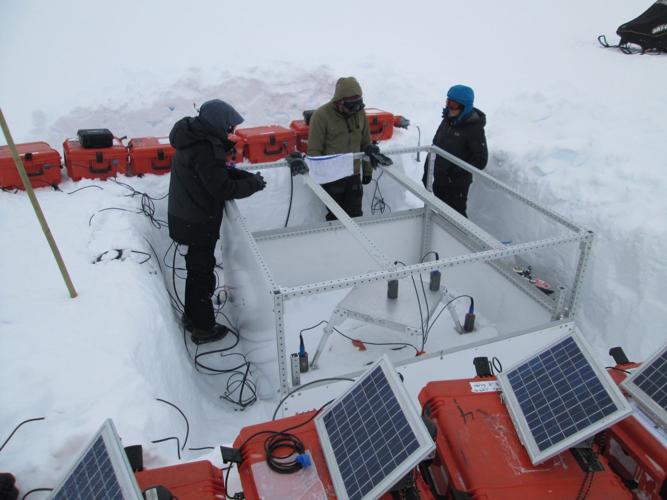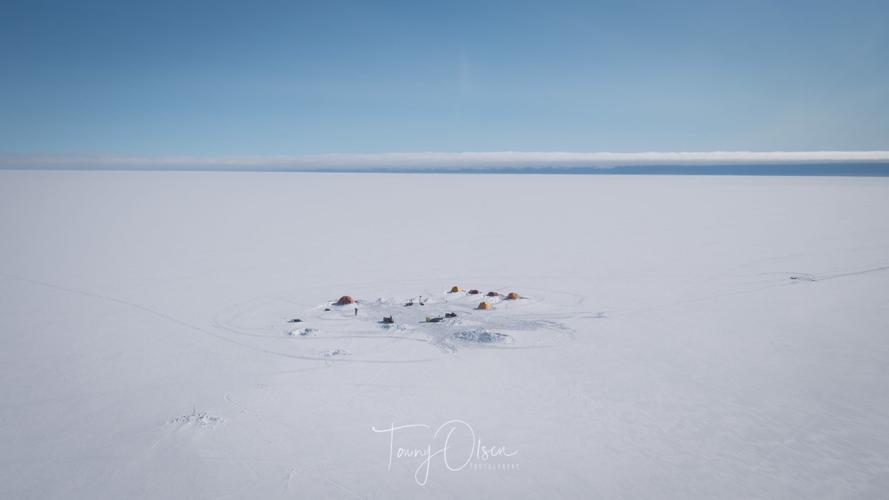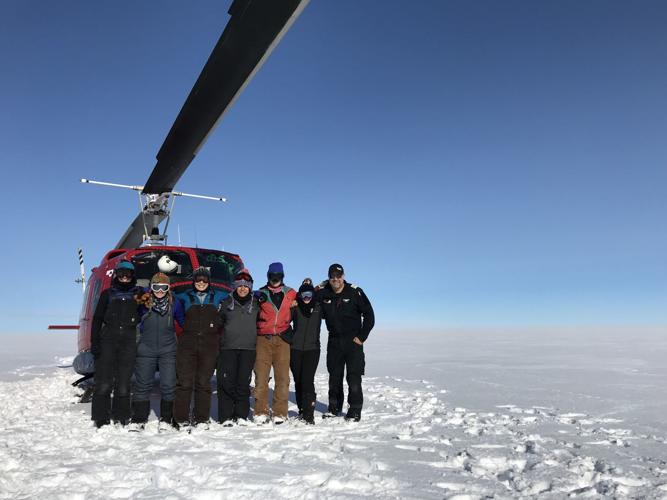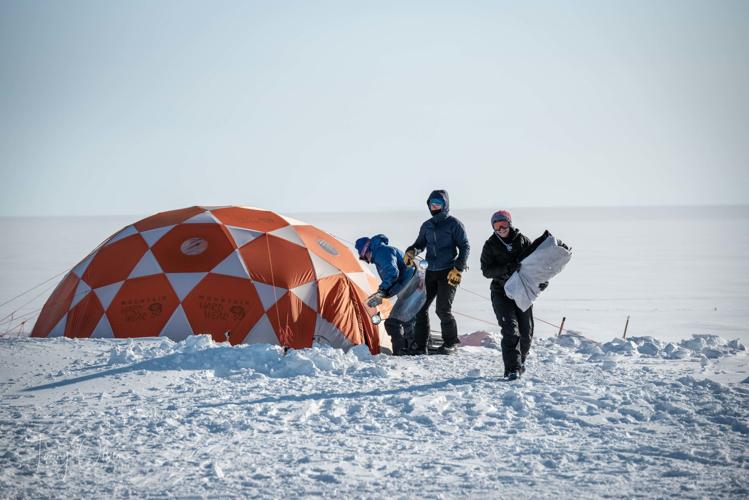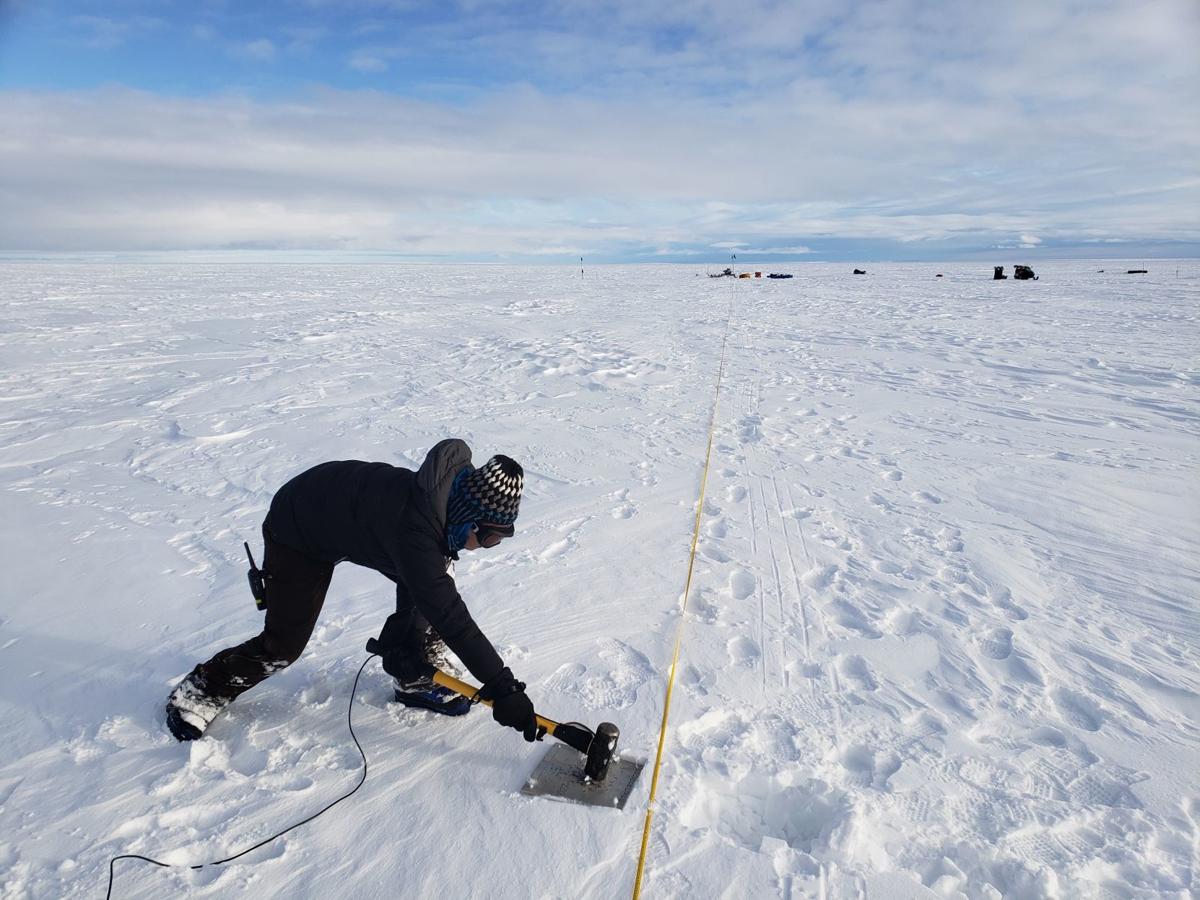About 800 miles from the North Pole, atop a lake covered by a glacier in northern Greenland, a team of six women worked together to dig out space equipment from under several feet of snow.
The equipment — a mock Jupiter moon lander with a seismometer — was left there in May when the experiment began and had been buried under a thick layer of snow that had fallen by the time the team — consisting of researchers and students at the University of Arizona — returned in August to collect data.
“We had field caches and things we tried to leave in a nice, neat manner so we would have easy access when we got back, and we had to unbury all of that, we had to dig it all out,” said Dani DellaGiustina, a senior staff scientist at the UA’s Lunar & Planetary Laboratory. “It was definitely one of the more challenging field expeditions I’d done so to see a bunch of young women rock, that was really satisfying.”
In fact, for several of those team members, this was their first time out in the field.
Juliette Brodbeck, a sophomore geosciences major, called it an intense first experience.
“It was definitely a life-changing experience,” Brodbeck said. “Greenland, I would say, is one of the most remote places on the planet, and out there on the ice sheet it’s completely untouched. There’s nothing. You have to bring everything out with you and you’re just surviving.”
This group was on an analog mission, which DellaGiustina described as a “semi-mission” done on Earth in a location that mimics the environment of the planet the real mission is going to. In this case, Greenland was the analog for Jupiter’s icy moon Europa, and the team was testing a seismometer.

Daniella DellaGiustina and two teammates put together the lander during NASA’s Europa Lander Mission in Greenland in Summer, 2018.
Seismometers, used to study the motion of the ground, can be used to find out how thick the icy crust of Europa is. DellaGiustina said the team’s hope is that its instrument will be selected for NASA’s upcoming Europa lander mission.
NASA is interested in Europa because it’s thought to have a subsurface ocean, DellaGiustina said, making it potentially one of the more habitable environments elsewhere in the solar system. She said of the three ingredients astrobiologists say are needed for life — water, essential chemicals and a source of energy — it’s thought that Europa has all three.
“A big question mark about this subsurface ocean is how deep is it beneath the surface,” DellaGiustina said. “That’s really important because if the crust is too thick, then maybe you don’t have enough connection between the watery subsurface ocean and the surface (for there to be life).”
Some challenges with the project are the sensors, which are usually buried in the ground far away from each other, will have to be mounted close to each other on the small spacecraft. Additionally, radiation levels are high on Europa’s surface, which can negatively affect electronics, according to Hop Bailey, the mission’s principal investigator.
“The radiation environment around Jupiter is really hostile to life, it’s orders of magnitude worse than Fukushima (nuclear plant),” Bailey said. “So life as we understand it is not going to persist on the surface of Europa … but below that ice sheet the radiation levels are much lower because the ice is acting as a shield.”
Brodbeck said working with those challenges, as well as the challenges that come with operating as a team, are experiences that are hard to get if you just stay in the classroom.

An aerial image of NASA’s Europa Lander Mission field site in Greenland taken by the pilot, Tonny Olsen, in Summer, 2018.
“The stuff they teach you in class is working with data … or the physics behind hollow glacial movements or melts, but what they don’t teach us is the logistical process of what it takes to get a team, and a grant, and get out to one of the most remote places on Earth,” Brodbeck said.
From here, the team will be analyzing the data the seismometers on the mock lander collected and comparing them to data taken from more traditionally deployed seismometers buried near the site to check the accuracy. Brodbeck will be helping analyze that data and also looking for more opportunities to return to the field. She said she loved the time on the Greenland ice sheet.
“It was very gratifying to be able to come out the end of it and be like, ‘I can do that,’ ” Brodbeck said. “It was also a good learning experience and really taught me firsthand where the data scientists use come from; I was right at the source of it.”
Bailey said the team members will learn if they have been selected by NASA in a few months, but he thinks they will be successful.
“Every proposal gets better, and we’ve gotten really high marks on past proposals,” Bailey said.
In the meantime, the team will continue to work on questions such as the most efficient way to send data back to Earth from so far away in the solar system and how to make the most of the mission.
“It takes a lot of interdisciplinary knowledge to make these projects a success because you really are trying to do something that nobody has done before,” DellaGiustina said.

The team with with one of the helicopter pilots with NASA’s Europa Lander Mission in Greenland in Summer, 2018.

Namrah Habib, who just graduated from UA, and teammates Natalie Wagner and Suz DetWeiler pack up camp.


